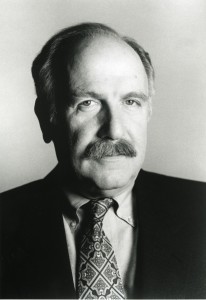Goberman Leaving Lincoln Center
When you think of the very latest in motion-image technology, you might think of laser projection, glasses-free stereoscopic-3D, digital surround sound, high-dynamic-range imaging, and the like. Would you believe that one man dealt with all of that in the 1970s? And that he was trained as an orchestra cello player?
 Lincoln Center for the Performing Arts announced today that John Goberman, executive producer, is leaving the PBS-aired Live from Lincoln Center series that he created, after 37 years, 13 national Emmy awards, three Peabody awards, the first Television Critics Circle award for Achievement in Music, and many more honors. Some of the highest-rated PBS shows were Live from Lincoln Center transmissions; one that wasn’t was the Live from the Met transmission of the opera La bohème, which he also produced.
Lincoln Center for the Performing Arts announced today that John Goberman, executive producer, is leaving the PBS-aired Live from Lincoln Center series that he created, after 37 years, 13 national Emmy awards, three Peabody awards, the first Television Critics Circle award for Achievement in Music, and many more honors. Some of the highest-rated PBS shows were Live from Lincoln Center transmissions; one that wasn’t was the Live from the Met transmission of the opera La bohème, which he also produced.
I don’t normally write about programming, however, so I’ll switch to technology. I first met Goberman when he was trying to create a low-cost set-top box for subscription programming (before there was Home Box Office, he had planned a pay-TV channel for performing arts programming). By the time I’d met him, he’d already transmitted a live opera exclusively on cable TV (1971) utilizing ultra-high-sensitivity secondary-electron-conduction image sensors so the show could be shot under existing performance conditions.
Our collaboration led to that inexpensive set-top box (just $25 even in prototype quantities). It was also the first to have stereo sound output. And it also led to Lincoln Center’s first (and, so far, only) patent.
In low-light-level production, Goberman also got us to experiment with multi-stage image intensifiers in front of each image sensor. And, when contrast seemed to be a problem, he sent me to work with Thomas Stockham (of Soundstream digital audio and Watergate-recordings fame) on the design of what darkroom experts referred to as “unsharp masking” but for live television imagery.
That work began in 1975, after an exhibition Goberman created for the American Association for the Advancement of Science. It was called “The Performing Arts and the Future of Television,” and it featured (among many other things) essentially all of the world’s solid-state cameras on a single table, flexible video disks, multichannel digital surround-sound for television, robotic camera mounts, motion capture, hand-held video projection, laser projection (images only, the prototype was too delicate), motion capture, and remote dance instruction via satellite, utilizing the first small-aperture earth station set up in midtown Manhattan and requiring the assistance of NASA to reposition a spacecraft.
When Live from Lincoln Center began in 1976, it was the first live television program carried nationwide with stereo sound. Later that season, an Italian opera carried the first live subtitles.
Another exhibition, “The Future of Film Technology,” created for the Film Society of Lincoln Center in 1979, included (among other things) optical image stabilization, compatible stereoscopic-3D/2D images, and dual-view no-glasses 3D that worked even for viewers with only one eye! In 1980, under Goberman’s auspices, the video artists Kit Galloway and Sherrie Rabinowitz created Hole in Space, through which viewers at Lincoln Center could look into a window and see and hear what was outside a window in California (and vice versa).
Goberman’s media-development department at Lincoln Center also dabbled in anamorphic video, multicamera scene stitching, and image magnification, all in the 1970s. Later, there were experiments in internet transmission, stereoscopic-3D image capture, live cinemacasting, and more. And Live from Lincoln Center is in its 37th season.
Tags: Hole in Space, John Goberman, Lincoln Center, Live from Lincoln Center, performing arts television, stereo sound, subtitles,

One comment
I should add a little about Goberman and the return of live television. Those of you on LinkedIn can read a post I did on the Media-Technology and Opera History group there: http://linkd.in/L4Omxr
For those of you who aren’t on LinkedIn, here’s the gist. After describing live opera television projects dating back to 1928, I add this:
Almost all of the above, however, was studio-shot programming. When the NBC Opera Theater team went to public television, they still produced studio-shot opera.
There had been some televised opera transmitted live from the stage. The first was by the BBC in 1947, the second by ABC in the U.S. in 1948. As recently as the late 1960s, however, when opera was shot from the stage, it almost might as well have been in a studio. Light levels soared. Cameras were mounted on platforms in the middle of the seating. Staging was adjusted for television needs. It was definitely not a typical live-opera experience.
That’s where Goberman came in. His mantra for the television team was “We are transmitting an opera, not producing it.” He wanted his cameras and microphones to be invisible, and there was to be no interference with the performers, the staging, or the audience. That’s why broadcasters from around the world came to Goberman to learn how to transmit opera performances on television, not how to shoot television operas.
Mark Schubin
The comments are closed.